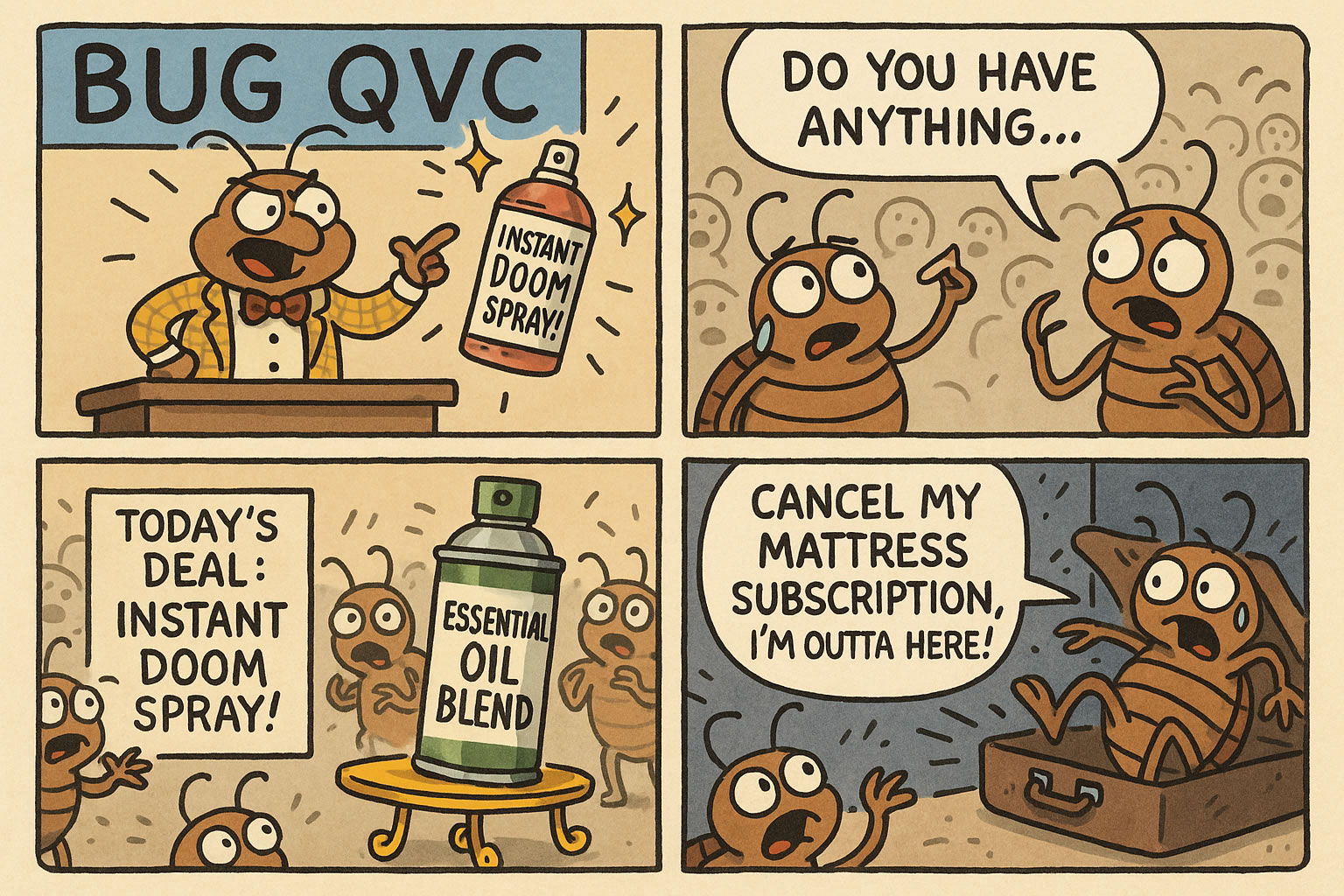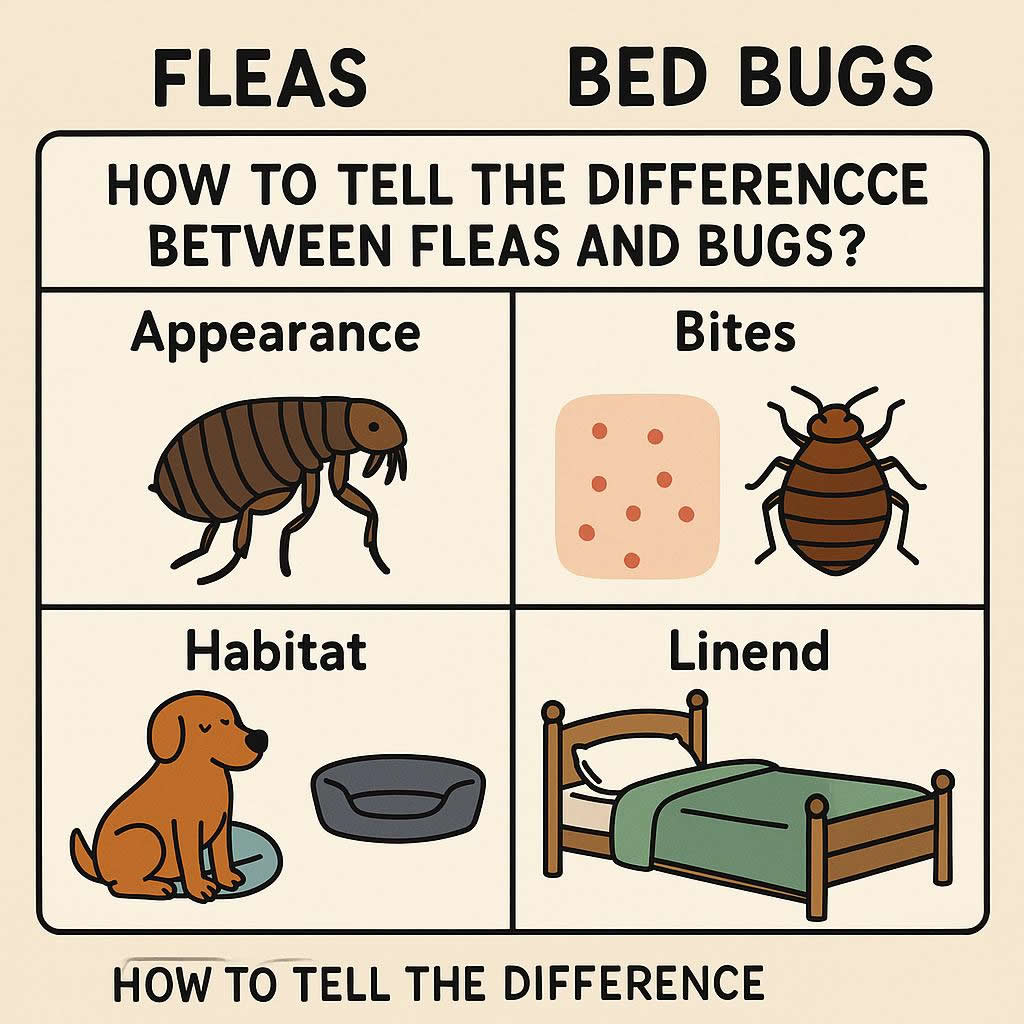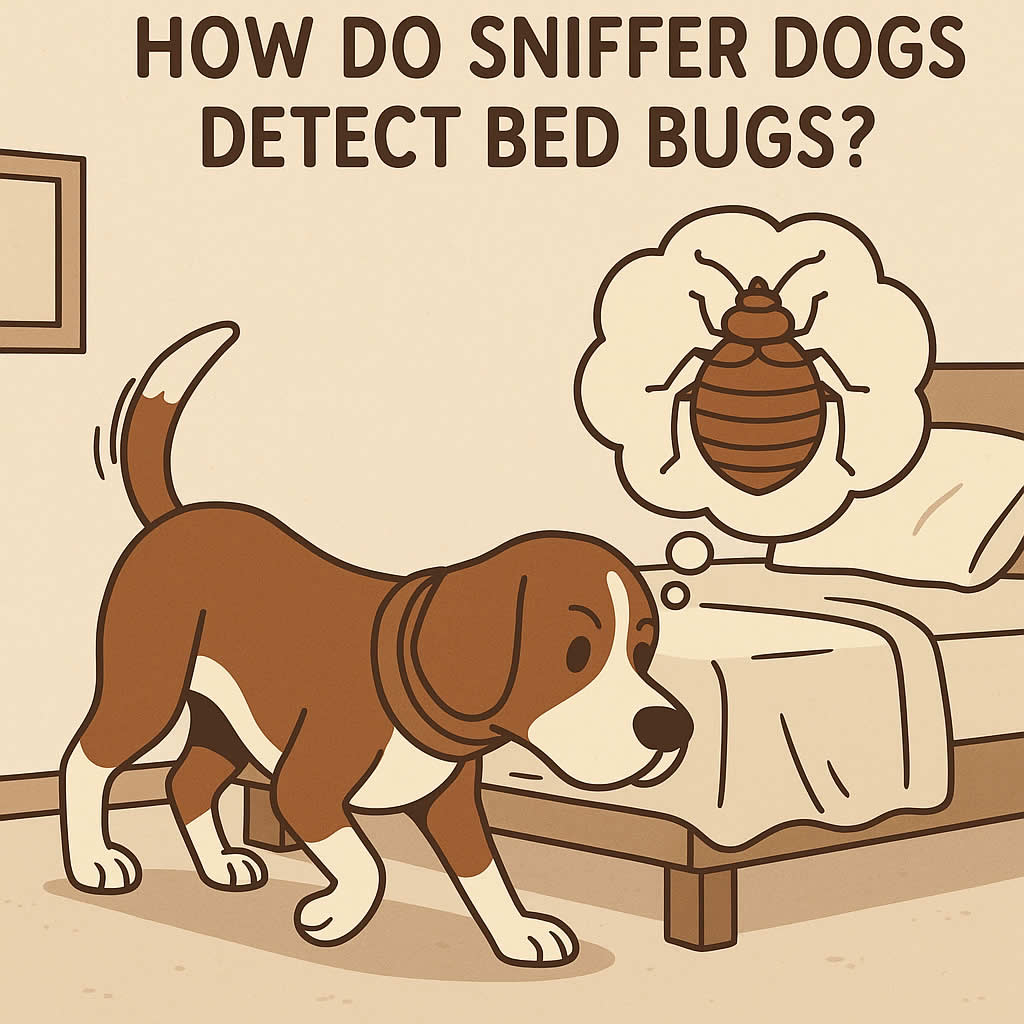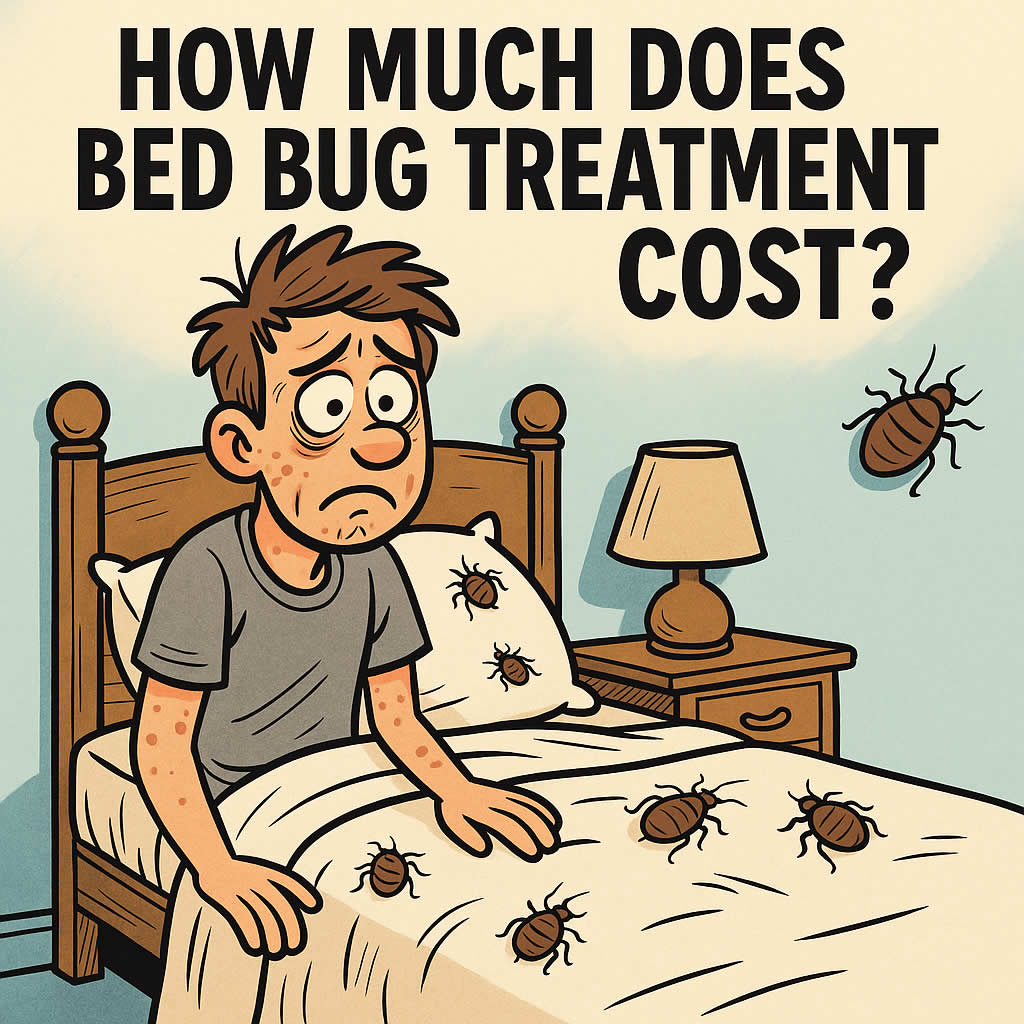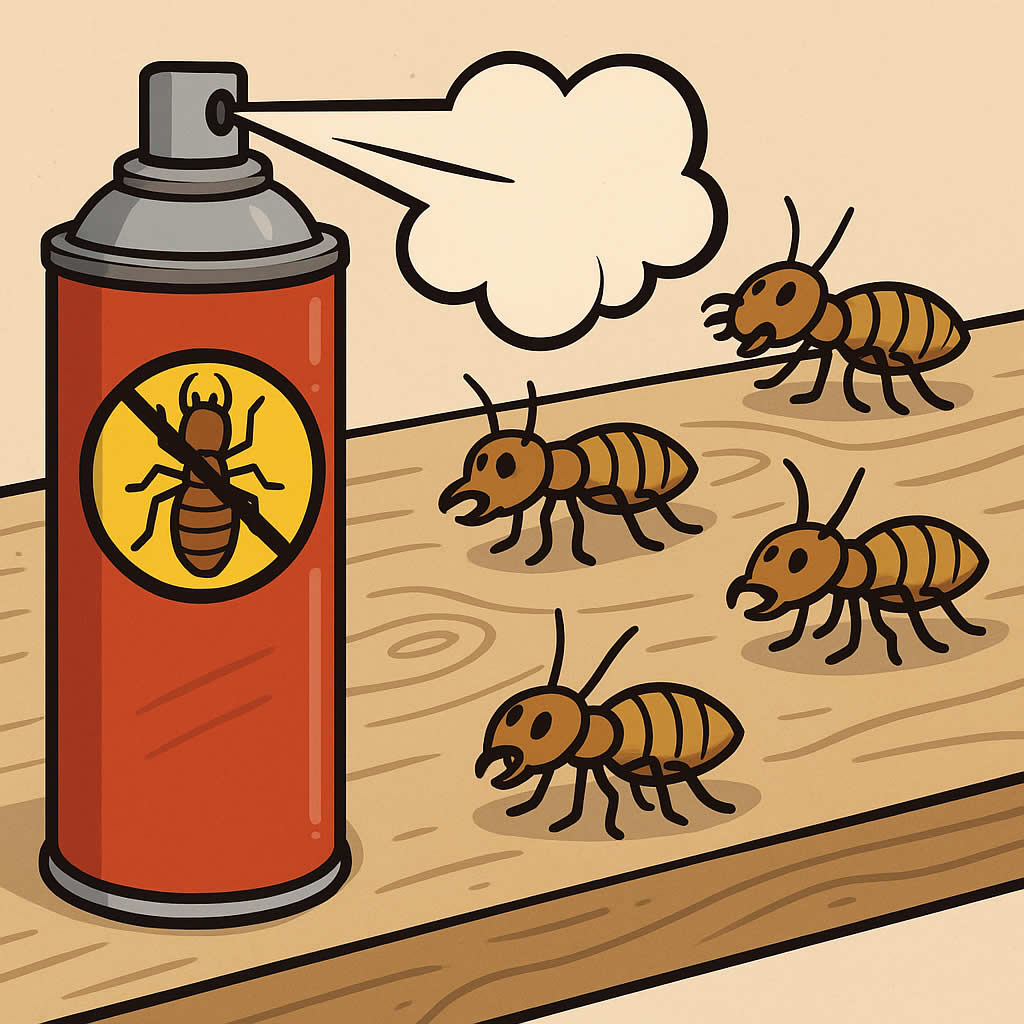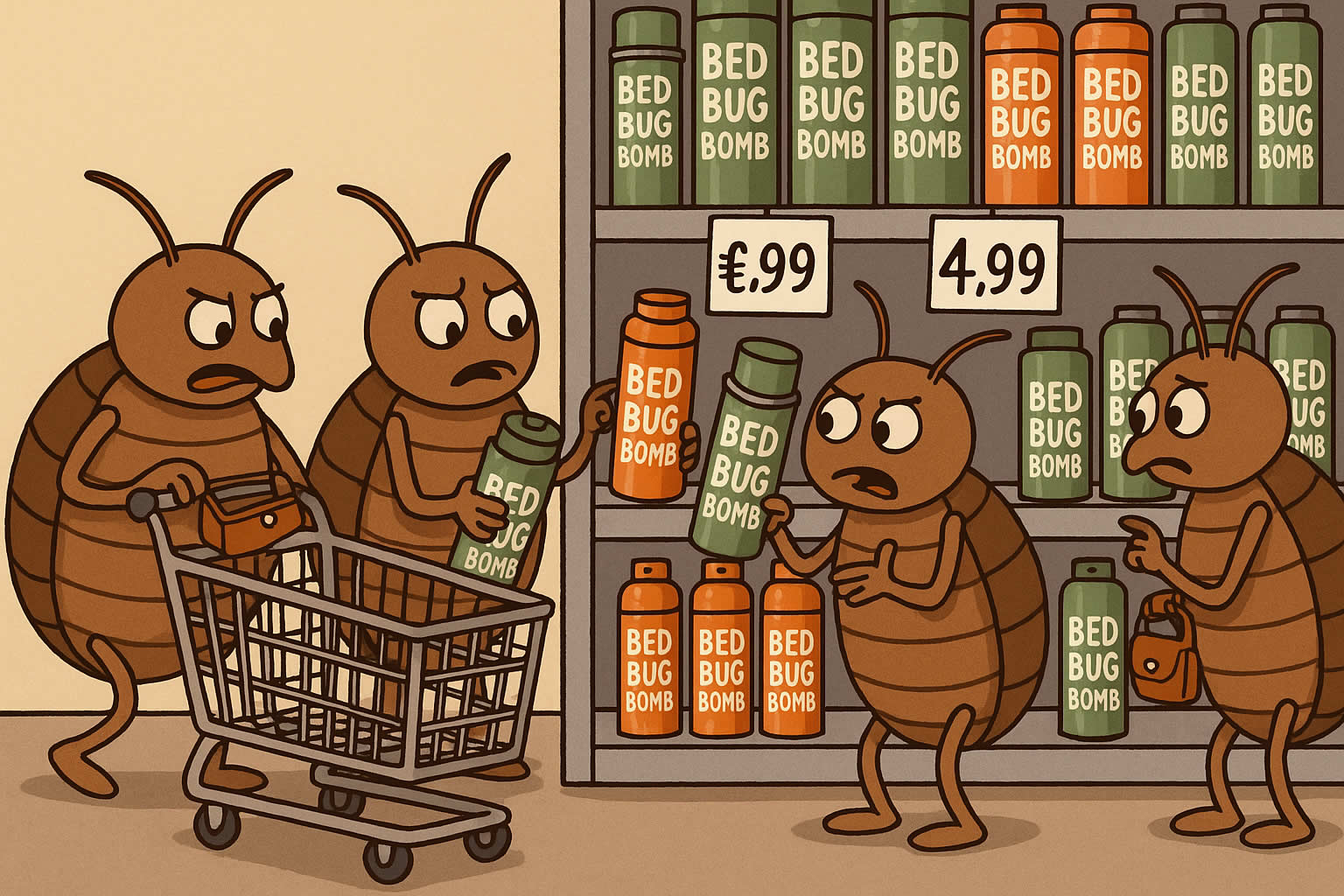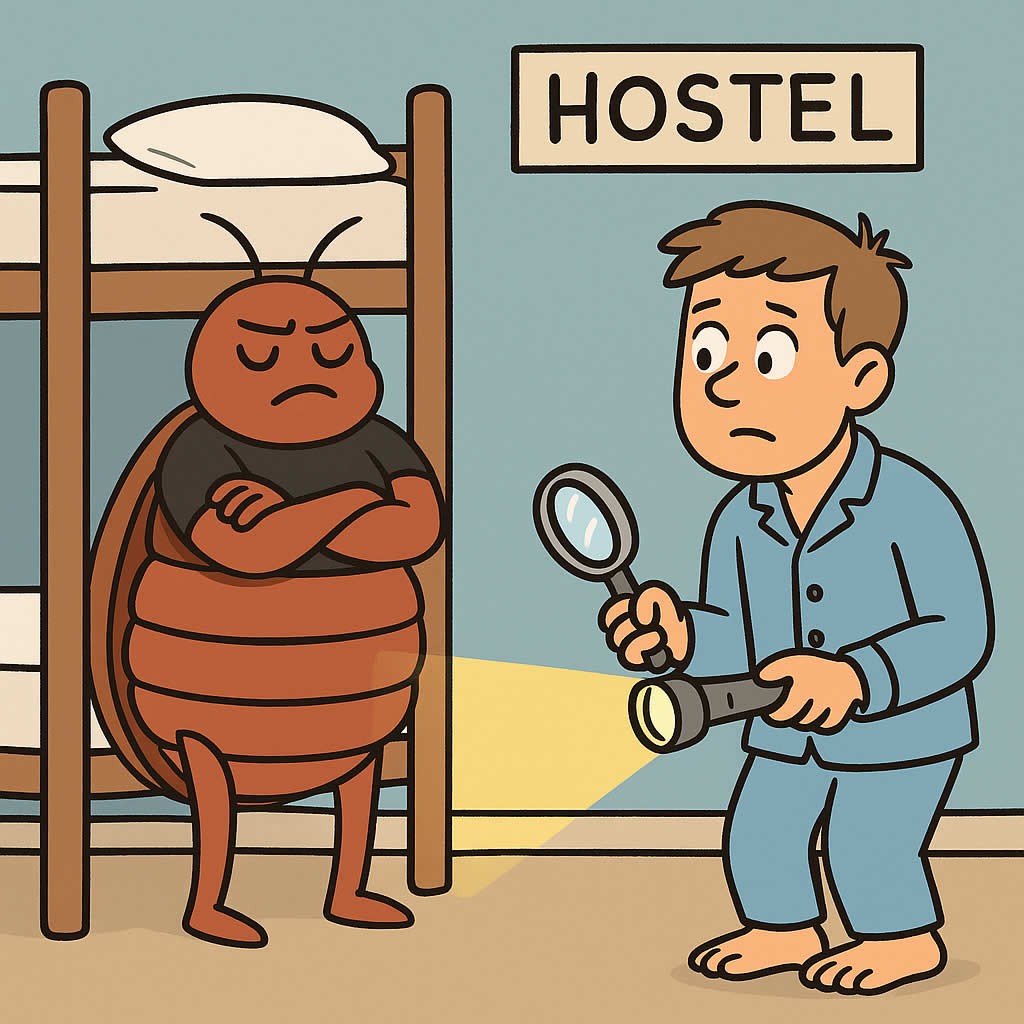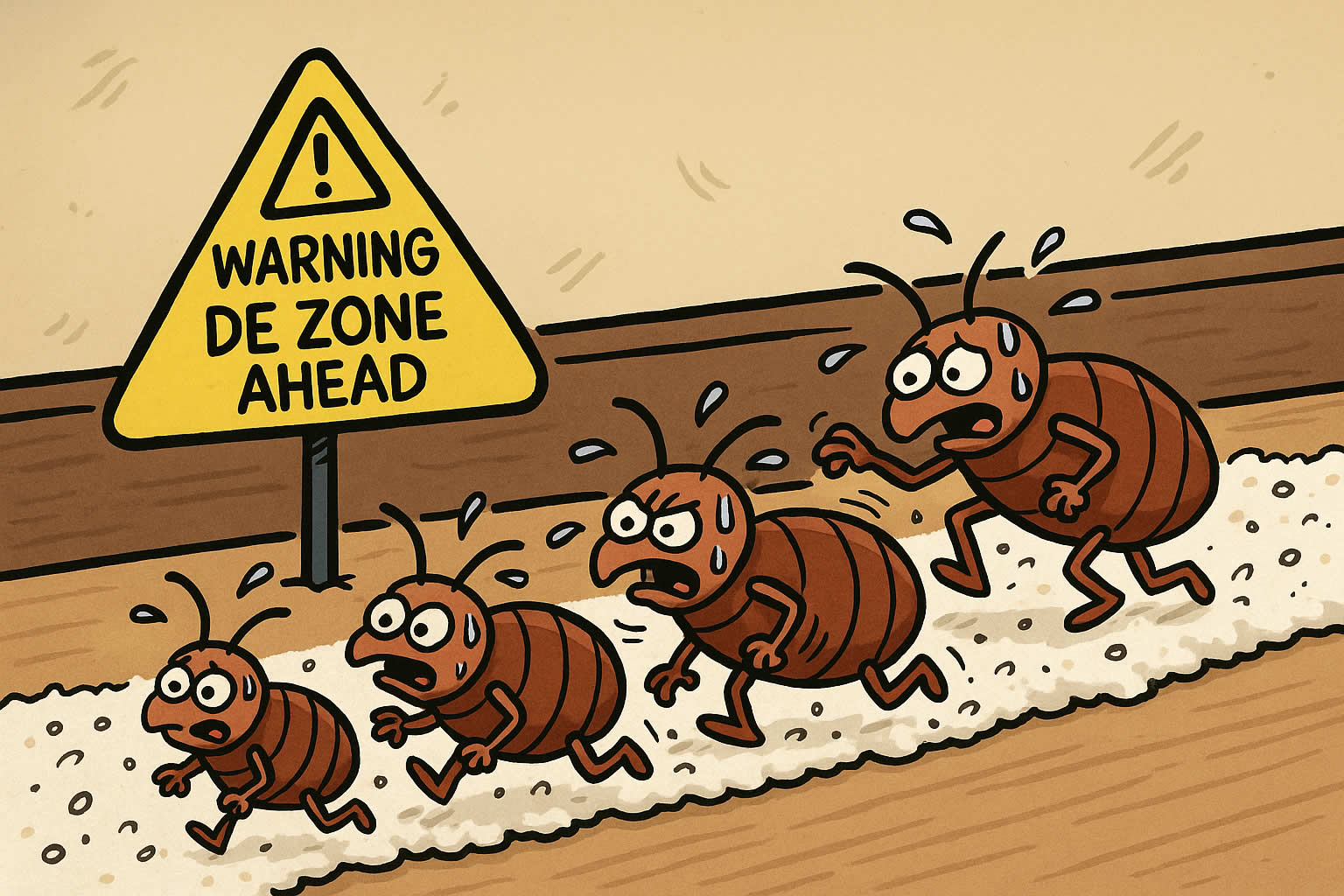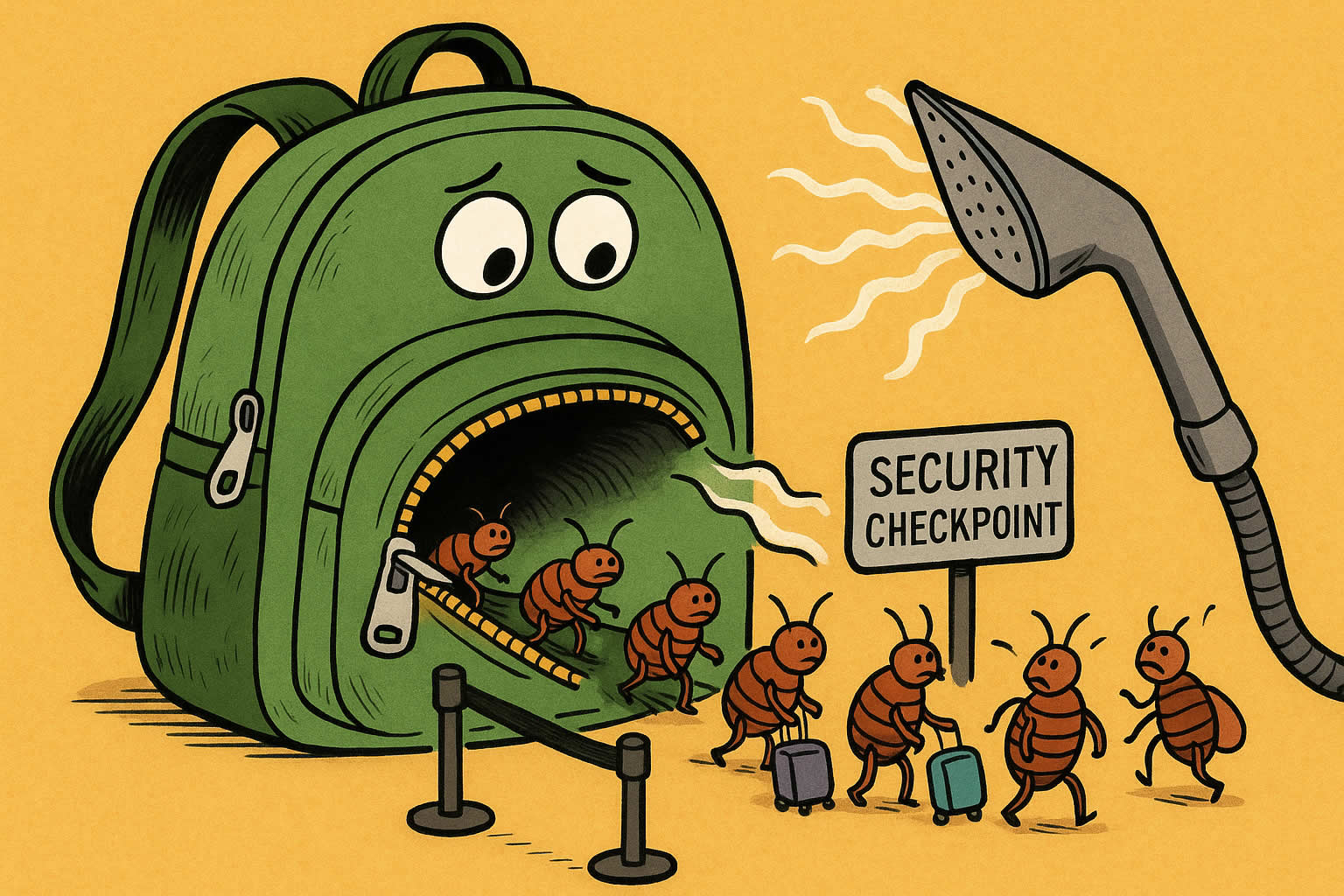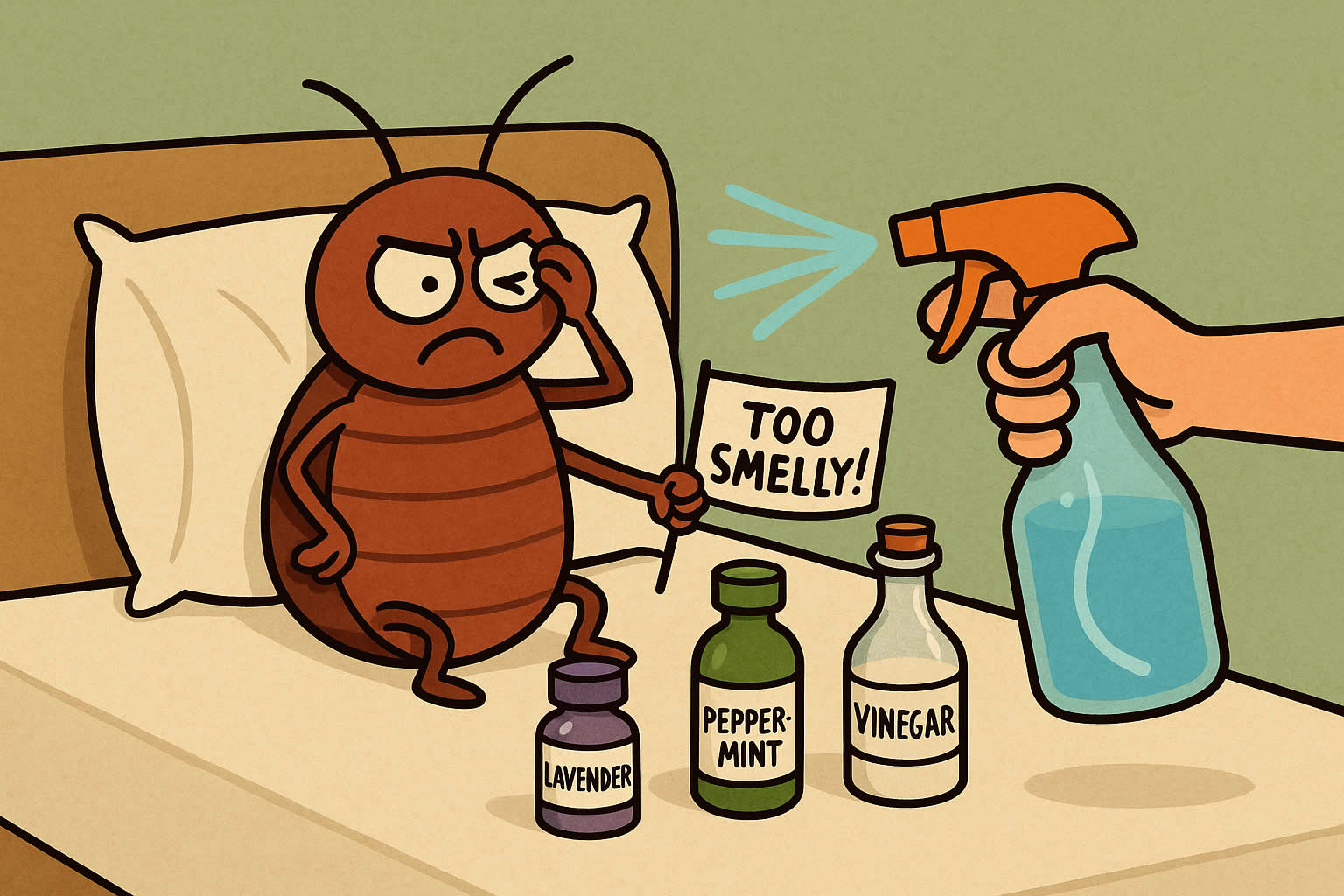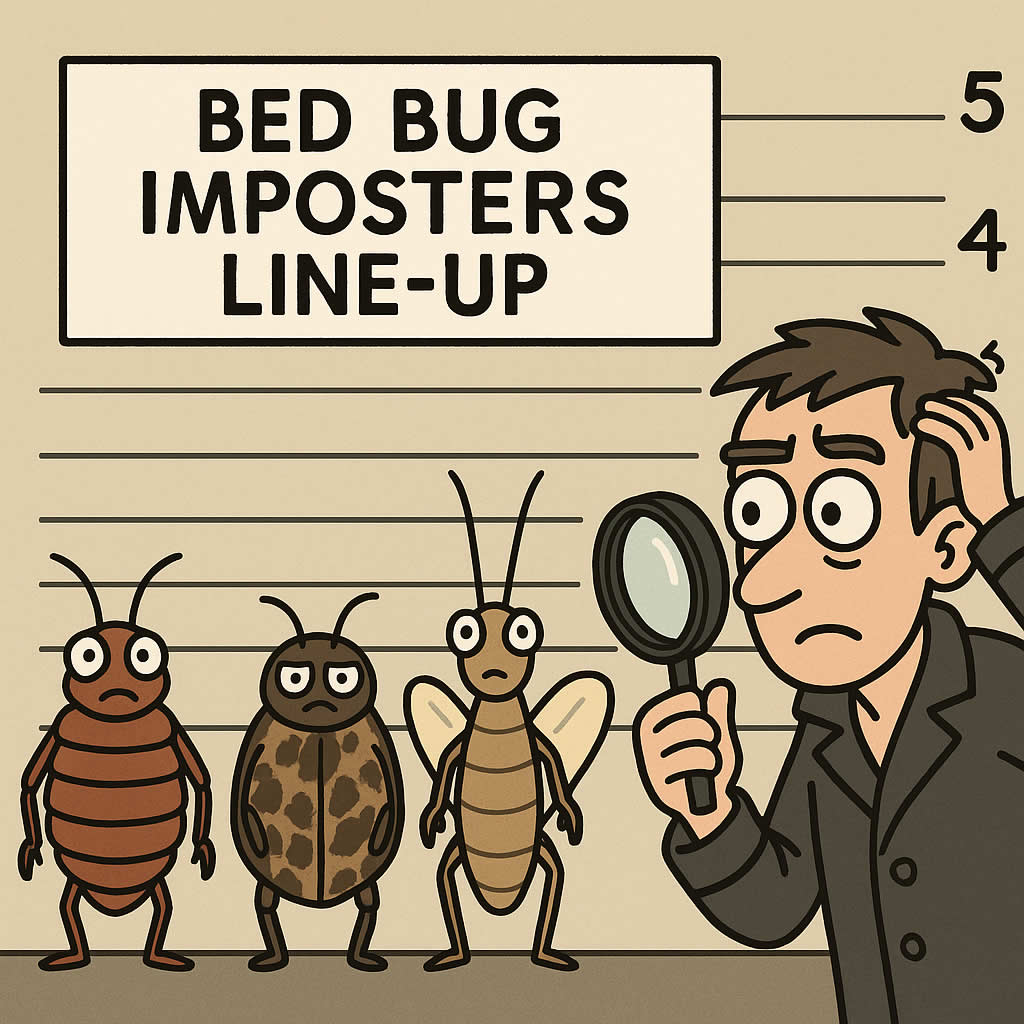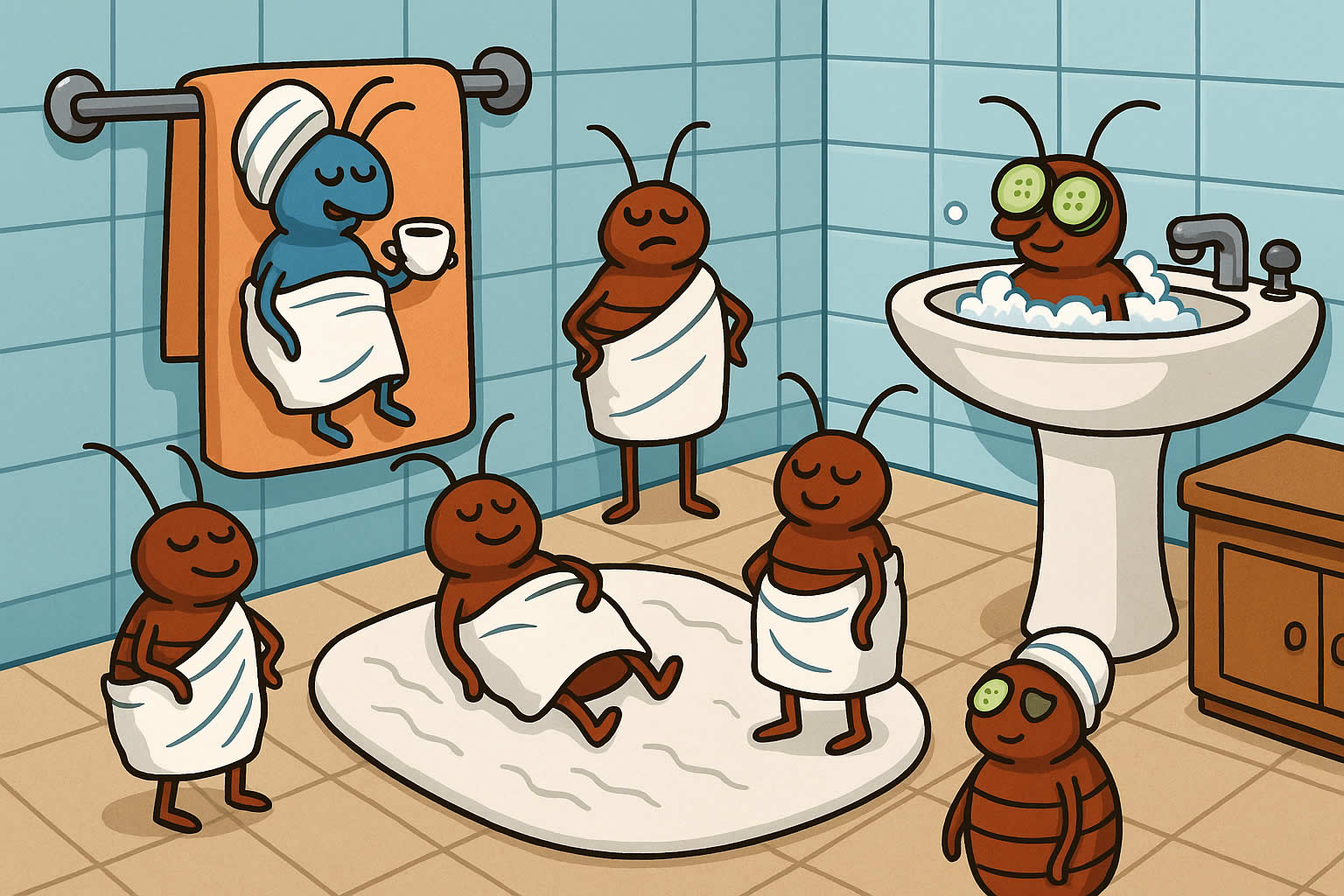Related Queries
ToggleMost common insecticides don’t kill bed bugs effectively. These resilient pests simply hide until the spray dries. The question of what kills bed bugs instantly has become more significant than ever.
These tiny 5-millimetre creatures might look harmless, but they’re nowhere near easy to eliminate. A single female bed bug lays up to 500 eggs throughout her lifetime and survives months without feeding. Professional bed bug sprays offer hope because they can curb these persistent pests when selected and applied correctly.
The difference between success and failure depends on choosing sprays that actually work. Your options range from chemical-based solutions to natural alternatives, and understanding them helps you make an informed choice based on your situation. This knowledge becomes especially valuable whether you’re tackling a minor infestation or facing a full-blown bed bug crisis.
Types of Bed Bug Sprays That Actually Work
Picking the right spray is a vital step to get rid of bed bugs. Many products don’t live up to their promises, and learning about your options will save you time, money, and frustration. Let’s get into the best types of bed bug sprays you can find today.
Chemical-based commercial sprays
Chemical sprays lead the market as the most common bed bug treatment because they’re accessible to more people and work well. These products usually contain active ingredients like pyrethroids – synthetic versions of compounds from chrysanthemum flowers that attack bed bugs’ nervous systems.
Products with cypermethrin work great against bed bugs, especially when mixed with other active ingredients. Triple-action formulas that combine cypermethrin, pyriproxyfen (an insect growth regulator), and chrysanthemum extract create a powerful mix that targets bed bugs throughout their life cycle.
Some chemical sprays keep bed bugs away for up to 12 weeks after you spray them, which makes them a great long-term solution. But some bed bug populations no longer react to pyrethroids, so you might need different approaches or combinations to tackle stubborn infestations.
Natural and eco-friendly alternatives
Natural bed bug sprays are a safer choice if traditional pesticides worry you. These products use plant-based ingredients that won’t harm humans and pets as much.
Cold pressed neem oil stands out because it’s the only biochemical pesticide officially approved to fight bed bugs. Essential oils like lavender, peppermint, tea tree, and eucalyptus help keep bed bugs away by hiding the scents that draw them in.
Desiccants offer another eco-friendly solution. These substances, including diatomaceous earth, destroy bed bugs’ protective outer coating and make them dry out and die. Bed bugs can’t become resistant to desiccants, though these treatments take longer to work.
Some natural formulas take unique approaches. To name just one example, plant-based polymer formulas physically coat and neutralise bed bugs when they touch them instead of using pesticides.
Professional-grade formulations
Professional-grade sprays pack more punch than consumer products because they contain stronger active ingredients. These work faster and give better results for serious infestations.
These formulas often mix multiple active ingredients that work together. Neonicotinoids work well against pyrethroid-resistant bed bugs by attacking their nervous system differently. Pyrroles, like chlorfenapyr, disrupt bed bugs’ cell functions and are another professional option.
Professional products often include insect growth regulators that stop bed bugs from growing into adults that can reproduce, which breaks their life cycle. Many of these stronger products are now available for home use if you follow safety guidelines.
Residual vs. contact sprays
Learning the difference between residual and contact sprays helps create a better treatment plan.
Contact sprays (also called non-residual sprays) kill bed bugs right away when sprayed directly but stop working once they dry. You need to spray the bed bug directly for these products to work. They work well on visible bed bugs but won’t affect those hiding in cracks and crevices.
Residual sprays leave an active chemical barrier that keeps working for weeks or months after you spray them. Bed bugs pick up the insecticide through their bodies when they crawl across treated surfaces. These sprays work best on areas where bed bugs travel, such as bed frames, baseboards, and furniture joints.
Experts often suggest using both types to control bed bugs completely – contact sprays for quick kills and residual formulas for lasting protection.
Most Effective Ingredients in Bed Bug Killer Sprays
The active ingredients in bed bug sprays are vital to pick products that work. A spray’s success depends on its ingredients. Let’s get into the ingredients that kill these stubborn pests.
Pyrethroids and their effectiveness
Pyrethroids are synthetic versions of compounds found in chrysanthemum flowers and serve as the main weapon against bed bugs. These chemicals target the insect’s nervous system. They cause uncontrolled nerve firing that guides them to paralysis and death. You’ll find ingredients ending in “thrin” such as deltamethrin, cypermethrin, and bifenthrin.
The biggest problem is resistance due to widespread use. Research shows bed bugs have developed unique protective mechanisms against pyrethroids. Bed bugs now express resistance-associated genes in their outer skin layer (integument). This creates a barrier that stops the toxin from reaching nerve cell targets. These pyrethroids often fail when used alone against modern bed bug populations.
In spite of that, pyrethroids work well when combined with other chemicals. Mixtures containing pyrethroids plus piperonyl butoxide, imidacloprid, acetamiprid, or dinotefuran can beat these resistance mechanisms.
Neonicotinoids for resistant bed bugs
Neonicotinoids are the next generation of bed bug control. They target pyrethroid-resistant populations. These synthetic nicotine derivatives attack the insect’s nervous system differently than pyrethroids. They make nerves fire continuously until failure.
Lab studies show remarkable results—though resistance keeps growing. Scientists compared susceptible laboratory strains with field-collected resistant bugs. They found some populations had become highly resistant. Michigan bed bugs showed resistance 462 times higher to imidacloprid, 198 times higher to dinotefuran, and 546 times higher to thiamethoxam compared to normal strains.
Neonicotinoids still work better against pyrethroid-resistant bed bugs than pyrethroids alone. Products that combine both chemical classes show better results because of their dual modes of action.
Desiccants and how they work
Desiccants take a different approach to bed bug control. Instead of targeting the nervous system, these substances destroy the waxy protective coating on the bed bug’s exoskeleton. This leads to dehydration and death.
Two main types exist:
- Diatomaceous earth (DE): A natural substance made from fossilised remains of aquatic organisms
- Silica gel: A synthetic substance that acts more like a sponge for moisture
Lab tests reveal silica gel performs much better than diatomaceous earth. Silica gel kills 97.5% of bed bugs within 24 hours while diatomaceous earth only kills 10%. Silica gel stays effective for 18 months after application.
Desiccants have one major advantage – bed bugs cannot develop resistance to them. They work through physical rather than chemical means, so they stay effective whatever genetic adaptations occur in the pest population.
Growth regulators for long-term control
Insect growth regulators (IGRs) copy juvenile growth hormones. They stop bed bugs from becoming reproductive adults. While they don’t kill adult bugs directly, IGRs break the reproductive cycle. This makes them perfect for long-term control.
IGRs like hydroprene and methoprene work in several ways:
- They affect reproductive organs and may cause sterility
- They prevent eggs from hatching
- They cause young insects to die before reaching maturity
The best bed bug control strategies use IGRs with fast-acting insecticides. Products that combine growth regulators with contact killers eliminate current bugs and prevent future generations.
IGRs might work slower than other options, but they are the foundations of complete bed bug management. They target the infestation’s ability to reproduce rather than just killing visible bugs.
How to Choose the Best Bed Bug Spray for Your Situation
Picking the right bed bug spray needs more thought than just grabbing the first product you spot. Your specific situation should guide how you select the product to get the best results.
Assessing the severity of infestation
The size of your bed bug problem substantially affects which treatment approach will work best. Small or recent infestations might respond to gentler treatments. Severe cases need more reliable solutions. Experts recommend a detailed elimination plan that combines:
- Visual inspection and bed bug monitors to check infestation spread
- Multiple treatment methods that work together
- Follow-up checks and re-treatment until the bugs disappear
The treatment should continue until you find no bed bugs after a month of monitoring. Buildings with multiple infested apartments need a complete building-wide approach.
Thinking about safety for children and pets
Safety comes first when you pick bed bug treatments. Many natural sprays contain plant-based ingredients that are non-toxic. These products work great in homes with children and pets. Look for products with these labels:
Child and pet-safe: Products that contain essential oils like lemongrass, cornmint, clove leaf, cedarwood and tea tree are safer options.
Non-toxic formulations: Water-based, odourless formulas won’t stain your furniture and reduce exposure risks.
Make sure to use sprays in rooms with good air flow. Keep them away from children, even the natural ones.
Budget considerations
Bed bug treatments come with different price tags. Finding the sweet spot between what works and what you can afford makes sense. Professional pest control services work better but cost more. Here’s how to save money:
Mix DIY methods for smaller infestations, but be ready to spend more if you need complete elimination.
Think about long-term value instead of the original price. Cheaper products that need many applications might cost more than effective one-time treatments.
Indoor vs. outdoor formulations
Using the right formula in each space makes a big difference. Indoor and outdoor pest control products are made differently for their specific environments.
Inside your home, stick to products that say they’re for indoor use. Outdoor pesticides used indoors can harm your health and push bed bugs deeper into hiding. Furniture and mattresses need water-based, odourless formulas that don’t leave stains.
The product label tells you everything you need to know. Some products work both indoors and outdoors, but always check the label before you use them.
Proper Application Techniques for Bed Bug Sprays
The right way you apply bed bug sprays can make or break your pest control efforts. Even the best sprays need proper application to work. Let’s look at how to get the most from your bed bug spray.
Preparing the area before spraying
A really good preparation makes all the difference. Get rid of clutter first to eliminate hiding spots and help the spray reach everywhere. Next, wash all bedding, clothing and fabrics at the highest temperature (60°C) or run them in the dryer for 30 minutes on high heat.
The area needs a deep vacuum, especially in seams and crevices of soft furnishings. Put the vacuum bag in plastic and take it outside right away. Move furniture at least 6 inches from walls and take beds apart if you can to reach all possible hiding spots.
Target areas for maximum effectiveness
Your spray needs to hit these key spots where bed bugs love to hide:
- Mattress seams and edges: Bugs make these spots their main hideouts
- Cracks and crevices: The spray should cover baseboards, bed frames, and furniture joints where bugs gather
- Box springs and bed frames: Take them apart to treat all joints and connections
- Behind electrical outlets and switch plates: These spots often get missed, so remove covers and spray well
Frequency of application
You’ll need to spray more than once. Bed bugs might show up for at least two weeks after your original treatment. Plan another spray after about a week to kill newly hatched eggs. Keep checking and treating until you don’t see any bugs for a full month.
Safety precautions during application
Your safety comes first during this process. Everyone, including pets, should stay out of treated rooms for 2-3 hours after spraying until everything dries. Fish tanks need their pumps turned off and should be covered.
The product label will tell you what protective gear to wear, and you’ll need good airflow during and after spraying. Don’t vacuum the treated spots for at least 15 days – this helps the insecticide work better.
Keep in mind that sprays alone might not solve your bed bug problem completely – you’ll need a comprehensive approach.
Common Mistakes When Using Bug Spray for Bed Bugs
Bed bug elimination can trip up even the most experienced homeowners. You need to understand these common mistakes to avoid wasting time, money, and effort while trying to curb these stubborn pests.
Relying solely on sprays for treatment
Most people think sprays alone will solve their bed bug problem. This approach doesn’t work. Bed bug bombs or foggers prove especially ineffective because they can’t reach bed bugs hiding in cracks and crevices. The best results come from Integrated pest management (IPM) approaches that combine chemical treatments with non-chemical methods like heat treatment, hoovering, and mattress encasements. You need desiccants, steam treatments, and proper preparation among other sprays to completely eliminate these pests.
Incorrect application methods
A detailed treatment needs careful attention. Poor area preparation before spraying makes the process much less effective. The bugs simply move to other rooms and come back after treatment when you miss their hiding spots in bed frames, furniture crevices, or nearby rooms. The timing between applications also matters—most sprays don’t kill eggs, so you need follow-up treatments after they hatch.
Using the wrong type of spray
The wrong spray choices can make infestations worse. Indoor use of outdoor pesticides creates health risks and forces bed bugs deeper into hiding. On top of that, many over-the-counter chemicals marked for bed bugs repel rather than kill them, which spreads the infestation. Bed bugs have developed resistance to many common chemicals, which makes some sprays useless.
Ignoring manufacturer instructions
Product labels contain legal requirements that you must follow. Pesticide overuse or misapplication creates health risks without killing the pests. People often make critical mistakes by spraying unmarked surfaces, using too much product, or applying it repeatedly thinking it will work faster. These mistakes not only reduce effectiveness but can create dangerous living conditions.
Note that seeing one or two bed bugs after treatment is normal. Success depends on proper application techniques and patience.
Our Final Say!
Getting rid of bed bugs needs good planning and the right mix of treatments. Many sprays claim they work well, but success comes down to picking the right products and using them the right way. Chemical sprays give quick results, and natural options work better for homes with kids and pets.
You should know that no single spray will get rid of all bed bugs. The best results come from mixing different treatment methods instead of just using sprays. This approach has both contact and residual sprays, plus non-chemical methods like heat treatment and thorough cleaning.
Knowing how bed bugs behave helps by a lot. You’ll have better chances of success when you follow the product instructions and stick to regular treatments. Small or large infestations need patience and determination. Bed bug control takes time, but these tough pests will leave your home when you use the right approach and apply sprays properly.
Pest Control Lower Sundon – Pest Control Shefford – Pest Control Rutland
